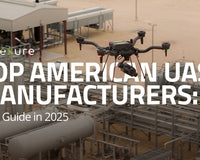Drive south on Highway 99 in late August and you’ll see mountains of almond hulls edging hulling yards from Sacramento to Fresno. Those tawny mounds are the papery shells left after the nut is removed, and they’re destined for cattle feed, compost, or bioenergy. In a normal season that by-product helps bolster an industry worth nearly $4 billion (USDA-NASS). Yet the same piles can erupt without warning.
In Fresno County, firefighters have battled thirty-foot hull heaps that burst into flame before dawn, smoldering for days while crews carved firebreaks and doused hotspots (ChicoER). The cause is almost always the same: spontaneous combustion.

Why Hull Piles Ignite: The Science Behind Spontaneous Combustion
Almond hulls are rich in sugars and still hold a surprising amount of moisture when they leave the huller. If that internal moisture creeps above about 12 percent, naturally occurring microbes start to feast. Microbial respiration is exothermic; it generates heat faster than it can dissipate inside a dense, insulated pile.
Temperatures quietly climb past 120°F. As hull fibers dry and sugars concentrate, oxidation accelerates, and the core can soar toward 400°F. At that flash point a single pocket of oxygen is enough to turn a warm heap into a roaring fire—often hours before any smoke reaches the surface (Almond Board of California, “Stockpiling”).
Central Valley weather makes matters worse. Hot, dry afternoons follow cool, humid nights; the daily swing injects moisture at sunset and then bakes the pile the next day. Add the occasional lightning storm or a tarp that traps steam instead of venting it, and conditions are perfect for a hidden fire to kindle itself.
Counting the Cost: From Charred Piles to Million-Dollar Headlines
A single hull-pile blaze can erase a season’s margin. One west-Fresno processor told reporters that a spontaneous-combustion fire threatened “millions of dollars in losses” once product, equipment, and downtime were tallied (YourCentralValley). Hulls worth roughly $60 a ton as feed become ashes in minutes. loaders sit idle while yards close for cleanup and dairies scramble to replace feed contracts.
Insurance premiums climb, and air-quality fines can follow if smoke drifts over neighboring towns. In dry years, local fire departments respond to multiple hull fires a month, tying up pumps, personnel, and overtime budgets when harvest is already stretching everyone thin.

Seeing Trouble Before It Smolders
Handheld probes can only sample a few points on a mound as they miss the hot kernels buried yards inside. Radiometric thermal drones have begun to turn the tide on hull fires.
Hovering 30–40 feet above a pile, a drone-mounted thermal sensor with 640×512 infrared resolution turns invisible heat into a real-time map, every pixel calibrated for temperature within ±2 °C. Operators tap the on-screen spot-meter to read exact degrees, switch color palettes to enhance contrast, and watch for unexpected bright patches—early warning signs that a section is heating faster than its neighbors.
Because ambient air cools after sunset, dawn and night flights reveal anomalies even more clearly. One 40-minute flight can scan dozens of piles. Any pixel over, say, 140°F triggers an alert. Crews break that section apart or process it immediately, heading off ignition long before embers break out.
Fire-safety specialists now call drones “the missing link” between manual checks and full-blown fire response (SafeSight). In other industries like coal yards, waste-wood facilities, even landfills, the same workflow has cut incidents to near zero, and almond operatoins are following suit.
Building a Drone-First Stockpile Monitoring Workflow
Adopting aerial thermography is equal parts capable technology and adoption of workflows. Yard managers start by mapping each pile in flight-planning software and scheduling scans at dawn, before solar heating masks true internal temperatures.
The drone flies the same grid every time, delivering images that can be compared from day to day. When a hotspot appears, its coordinates and temperature are logged, and the pile is turned, spread, or cooled.
Over the season, archived thermal images create a library of evidence. Managers learn which piles run hotter (often the wetter ones), refine moisture targets, and prove compliance to insurers and regulators alike.
Complementary Mitigations: Drones + Good Stockpile Hygiene
Thermal drones shine a light on hidden danger, but they work best alongside fundamentals that growers have practiced for decades. Keep hull moisture below 12%. Choose well-drained sites and orient piles North to South so both faces dry evenly. Cover piles before rain, yet vent tarps on warm, dry afternoons to release condensation. Maintain clear aisles between mounds for airflow and equipment access. Most of all, record every load’s moisture and temperature history. When a drone flags an anomaly, the paperwork often explains why.
Smarter, Safer, More Sustainable Almonds
Almond processors already envision docked drones that launch at midnight, scan the yard, and send a color-coded report before sunrise. As bioenergy and soil-amendment projects create new outlets for hulls, the need to stockpile may shrink, but spontaneous heating will remain a physics problem.
Pairing disciplined pile management with high-resolution eyes in the sky offers a pragmatic defense, protecting product, people, and profit.
Ready to add aerial thermography to your workflow? Contact Advexure’s enterprise team to integrate the right thermal drones and keep your almond stockpiles safe from fire.










